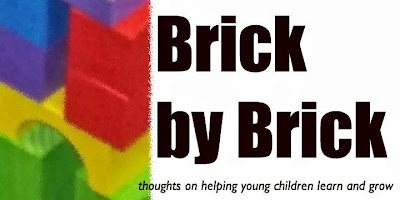Pages
▼
Wednesday, September 16, 2015
Balancing Act
There are a lot of things in my head right now. Lots of issues related to early childhood education. Reading and reflecting on the book What If Everyone Understood Child Development? and reading the blog book study on Early Childhood and Youth Development.
A lively discussion on the first post of the blog book study developed regarding free play with little guidance versus a more structured or planned activities that offer more guidance to child's play. I've read conversations about use of technology in Rae Pica's book and in the book study comments (and other places).
Technology or screen-free? Free play or guided play? Use themes or not? Lots of issues rumble around in education for young children.
As I reflect and ponder, my mind comes to this answer: Yes and no.
I think that a balanced approach is often the best one. I provide materials for kids to use and may have items that suggest a certain type of play, but I will follow the kids' lead if they move in a different direction. I'll provide books and writing materials for kids to use as their interests dictate.
Teachers can incorporate technology in ways that make sense and support kids' exploration. They bring in real tools that allow investigation in purposeful and safe ways. They encourage risky play in a safe environment.
These two words have become the foundation of my thinking and philosophy for creating learning environments for kids: balance and intention. These two words rest on the bedrock of kids first.
Intention - do things in a purposeful way; choose to use what tools are needed to meet the needs of kids and encourage the best exploration possibilities.
Balance - don't lean too dogmatically toward one end or the other on most of those continuums; technology sometimes and no screens sometimes; free play sometimes and more guidance sometimes; more movement and noise sometimes and more quiet sometimes.
Kids first - do be dogmatic when it comes to kids' needs; avoid doing those things that don't meet the developmental needs of young kids; try things and then adjust or stop if it doesn't fit the kids; avoid requiring all kids to meet an arbitrary milestone.
Maybe I'm too wishy-washy on things. Maybe I need to stay "do this, not that." But I've seen too many groups of kids to say that every classroom and every kid should do one thing and not the other. The moment I think that, a kid comes along that proves me wrong.
I'm just thinking and pondering here. Maybe I'll change some of this thinking as I read and learn more.
But balance, intention, and kids first are the keys for me right now.
P.S.: I love Rae Pica's book. Every issue makes me think about where I stand on things. And I know that many things done in public schools today do not think about young kids. I recommend you read the book and think, too! (I get nothing for saying this. It's just my opinion.)

